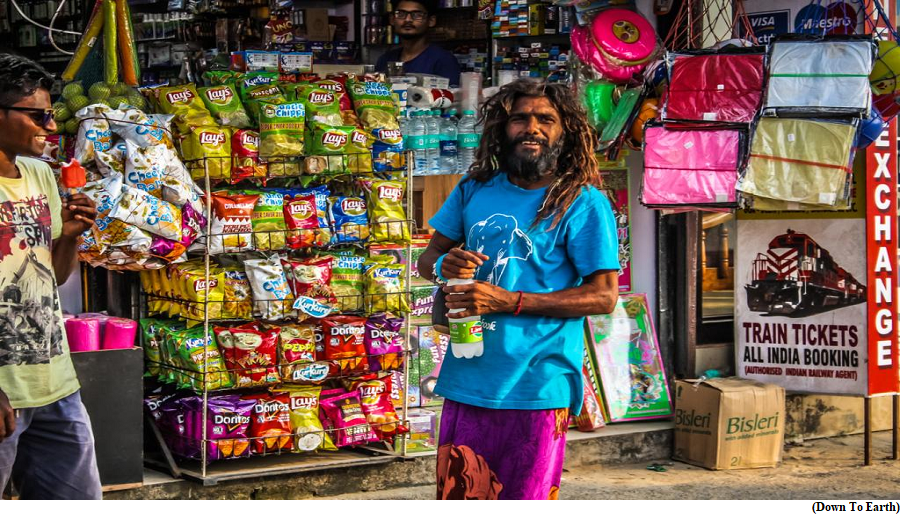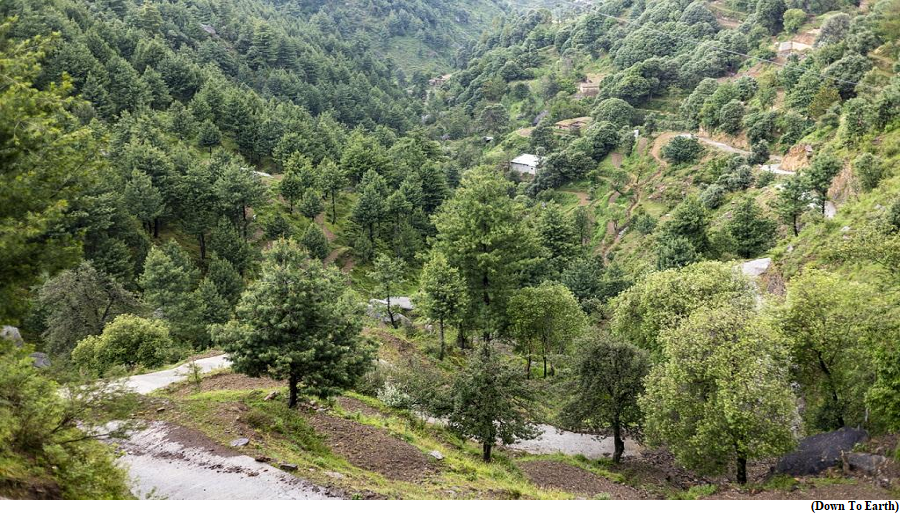India’s ultra-food processing sector growing, WHO calls for nutrient-based tax model (GS Paper 2, Health)

Why in news?
- India’s ultra-processed food sector grew at a compound annual growth rate of 13.37 per cent in retail sales value from 2011 to 2021, a report by the World Health Organization with the Indian Council for Research on International Economic Relations found.
- The upward trend needs to be curtailed with policy interventions to prevent an obesity epidemic in India similar to what some western countries are experiencing.
What are ultra-processed food?
- The ultra-processed food as those with a long shelf life and generally have five or more ingredients, including but not limited to preservatives, emulsifiers, sweeteners and artificial colours and flavours.
- They are a key risk factor for non-communicable diseases early in life, as documented by several researchers.
Ultra-processed food sector:
- The Indian ultra-processed food sector’s annual growth rate declined sharply when the pandemic first struck, dropping from 12.65 per cent in 2019 to 5.50 per cent in 2020, the report showed.
- However, a significant rebound in sales occurred the following year when an 11.29 per cent growth was observed during 2020-2021.
- Chocolate and sugar confectionery, salty snacks, beverages, ready-made and convenient foods and breakfast cereals were identified as the five popular categories of ultra-processed foods.
Share of beverages:
- In terms of retail sales volume, the share of beverages was the highest during 2011-2021, followed by chocolate and sugar confectionery and ready-made and convenience food in the second and third place, respectively, the analysis highlighted.
- Among beverages, the retail volumes in 2021, concentrates / squashes accounted for 77 per cent of the market (a decline from 80 per cent in 2011), followed by soft drinks / concentrates at 13 per cent and juices at 9 per cent.
- In the chocolate and sugar confectionery category in 2021, the subcategory of sweet biscuits accounted for over 43 per cent of the market share in terms of retail sales value.
- Retail sales of salty snacks rose at a rate of 16.78 per cent from 2011 to 2021, the data indicated. High salt content can make consumers vulnerable to hypertension and heart and kidney diseases, among others.
Recommendations:
- The report made recommendations to help India attain nutritional security and meet the United Nations-mandated Sustainable Development Goals by 2030.
- The Food Safety and Standards Authority of India (FSSAI), in consultation with other stakeholders, should come up with a clear and transparent definition of High Fat Sugar Salt (HFSS) food.
- Once the FSSAI defines HFSS foods, the GST Council needs to link their tax structure with the HFSS food definitions.
- A nutrient-based tax model focuses on higher taxes for products which have fat, sugar, and salt beyond the recommended levels and lower taxes for the healthier and reformulated options.
- India’s policies and programmes such as Saksham Anganwadi and Poshan 2.0 do not adequately cover the issue of overnutrition and unhealthy diet-related diseases.
Way Forward:
- Low intake of whole grains was the leading dietary risk factor for the increased prevalence of NCD-induced deaths, mostly cardiovascular diseases and diabetes, in India, according to the Global Burden of Disease study in 2019.
- The authors of the report called for a nutritional transition to a healthier lifestyle.
Climate change may cause up to 38% decline of low & mid latitude deodar trees
(GS Paper 3, Environment)
Why in news?
- Climate change and increased greenhouse gas emissions are likely to trigger forest losses in Himalayan Cedar (Cedrus deodara), commonly known as deodar, pointed out a recent study.
- Researchers from India conducted studies at 17 sites from low, middle and high-latitude areas under two climate regimes of the Himalayas. The two climates are dominated by monsoon rainfall and westerly disturbances.

Why it matters?
- Deodar has a high demand in the market owing to its fine-grade timber, medicinal qualities and sacred use.
- The growing climate crisis will result in up to 38 per cent decline in deodar growth for plantations in low- and mid-latitude regions.
RCP:
- The scientists predicted possible greenhouse gas and aerosol emissions scenarios under representative concentration pathways (RCP) 4.5 and 8.5.
- RCP 4.5 is a moderate scenario where global emissions peak around 2040 and then decline, as defined by the Intergovernmental Panel on Climate Change.
- RCP 8.5 is a climate scenario where business is as usual and emissions will continue to rise for the entire 21st century.
- Hence, the projections due to climate change owing to RCP 8.5 will typically have more impact compared to the former.
- The predicted growth trends show forest loss between 34 per cent and 38 per cent under RCP 4.5 scenario while the decline is predicted to be for 29 per cent and 32 per cent for RCP 8.5 scenario.
Threats to Deodar:
- Deodar located in inner dry and outer moist ranges receives precipitation due to western disturbances from December to February and summer monsoon between June and September.
- The tree is also known for its capacity to sequester a significant amount of carbon. However, climate change combined with anthropogenic activities such as deforestation and competition with other species has shrunk its distributional range.
- Deodar faces threats from chir pine species, which shows more tolerance towards drought and fire and is also outcompeted at higher elevations by silver fir in moist areas and blue pine in dry regions.
- Moreover, deodars also face insect attacks, causing heavy losses.
Suitable conditions:
- While temperatures from March to May have a negative impact on tree growth, the spring precipitation leads to positive tree ring growth.
- Heavy snowfall in 2022 winter is another factor favouring deodar growth, followed by pre-monsoon spring. The snowmelt in spring offers soil moisture and further helps the growth of deodar, enhancing photosynthesis.
- The process increases food production and cambial (a tissue layer that helps plant growth) activity in March, April and May. However, dry conditions due to increased temperature during the growing season stunts tree ring growth.
- The high temperatures cause quick evaporation of snow-pack water that reduces moisture in the soil, suppressing photosynthetic activity and slowing the cambium activity.
Concerns:
- The new findings revealed that deodar trees located at low and mid-latitudes may be unable to keep up with the increasing temperatures at RCP 4.5 and RCP 8.5 conditions.
- The decline in the growth of deodar is primarily due to temperature increase and precipitation decline during pre-monsoon months between March and May.
- The researcher added that trees hypersensitive to drought and heat stress become vulnerable to pathogens and insect infestation.
Way Forward:
- These findings may be used to take suitable migratory steps for the conservation of deodar in the HKH.
BRICS now a non-Western grouping with the induction of six more member nations
(GS Paper 2, International Organisation)
Why in news?
- During the ongoing BRICS Summit 2023, the member countries on Thursday announced the expansion of the grouping by welcoming six new countries; Argentina, Egypt, Ethiopia, Iran, Saudi Arabia, and the United Arab Emirates (UAE) into the fold.
- The full membership will take effect in 2024.

A major shift:
- By doubling its number of members from five to 11 in one quick sweep, the BRICS grouping has strengthened its position as a global grouping to be reckoned with.
- In addition, the choice of countries, bringing in four major players from the West Asian region — Egypt, Iran, Saudi Arabia and the UAE, apart from Ethiopia and Argentina from Africa and South America is significant, as it denotes a shift in the non-western economic grouping’s underpinnings, to make it a more politically relevant bloc.
- BRICS founders chose from 22 countries that formally applied for BRICS membership, and more than 40 in all that have evinced interest in the group.
India’s role:
- While India may not have been in favour of such a rapid expansion, it took the lead in drafting the criteria for membership, and the fact that most of the new members are strategic partners of India is the result of India’s efforts.
- The induction of Iran in BRICS sends a message against U.S. sanctions, just as Iran’s induction in the SCO in 2023 did, and it is significant that Indian Prime Minister spoke to Iranian President Ebrahim Raisi before the summit.
Concerns:
- However, many international observers have pointed out that all the new members have very close economic ties to China, and the acceptance of Iran and Saudi-UAE to the same grouping has only been made possible by the peace deal brokered by China earlier in 2023.
- This factor means that in the future, India may have to lobby harder to make its vote in the BRICS grouping count.
What is BRICS?
- BRICS, an acronym for Brazil, Russia, India, China, and South Africa, is an association of five major emerging economies that have come together to foster international collaboration across various key sectors.
- Formed in 2006, BRICS plays a crucial role in impacting economics, politics, and global governance.
- Originally, the BRICS was identified for highlighting investment opportunities and had not been a formal intergovernmental organisation.
- Since 2009, they formed a more cohesive geopolitical bloc, with the governments of the five nations meeting annually at formal summits and coordinating multilateral policies.
How did BRICS come into being?
- The roots of BRICS can be traced back to 2001 when the term ‘BRIC’ was coined by Goldman Sachs economist Jim O'Neill to highlight the economic potential of Brazil, Russia, India, and China and showcase that these four countries will collectively dominate the global economy by 2050.
- South Africa joined the group in 2010, transforming it into "BRICS".
- The BRICS have about 26.7 per cent of the world's land surface and 41.5 per cent of the global population.
- The inaugural BRIC summit was held in 2009, and these nations recognised their shared interests and common challenges. This laid the foundation for regular meetings, setting the stage for deeper cooperation.
What are its major roles?
- Economic cooperation: The BRICS economies represent a significant portion of the global gross domestic product (GDP) and trade. They work on enhancing economic ties through trade agreements, investment partnerships, and the promotion of intra-BRICS trade.
- Political diplomacy: The grouping acts as a platform for these five nations to discuss political and strategic issues of mutual concern, including global security, regional stability, and international governance reform.
- Development and innovation: The BRICS emphasises cooperation in science, technology, and innovation, facilitating joint research and knowledge-sharing.
- Global governance reform: The five countries advocate for the reform of international institutions such as the United Nations (UN), the International Monetary Fund (IMF), and the World Bank to represent the interests of emerging economies.
- Cultural exchange: BRICS fosters cultural ties through educational exchanges, tourism, and interactions to enhance understanding and collaboration.
What is the funding structure of the grouping?
- Currently, two entities make up the financial architecture of BRICS, namely the New Development Bank (NDB), sometimes referred to as the BRICS Development Bank; and the Contingent Reserve Arrangement (CRA).
- Both entities were signed into the treaty in 2014, and they became active in 2015.
- Established in 2014, the NDB is a notable initiative that provides funding for infrastructure and sustainable development projects in BRICS nations and other emerging economies. The NDB operates on a subscription-based model, with each member contributing to the bank's capital and having an equal say in its functioning.
- The CRA is a framework that protects against global liquidity pressures.




